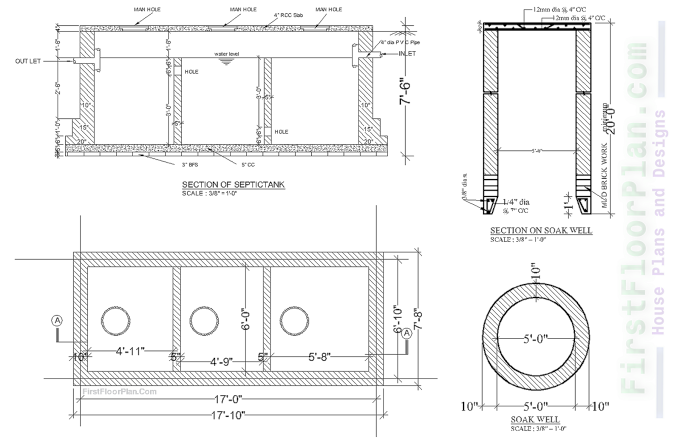Screed on Insulation
Imagine the foundation of your floor system as a
shield, protecting and strengthening the layers beneath. Now, consider the
pivotal role that screed on insulation plays in fortifying this shield.
As you navigate the complexities of construction projects
involving insulation and screeding, there are nuances and challenges that
demand attention. Understanding these intricacies is not only beneficial but
necessary for ensuring the longevity and resilience of your flooring
installations.
Stay tuned to unravel the layers of information that will
equip you with the tools needed to navigate the world of screed on insulation with help from
Buildtecacoustics.co.uk effectively.
Importance of Insulation in
Screeding
Insulation
in screeding is a critical element that significantly influences the durability
and performance of floor systems. Proper insulation installation techniques are
vital in preventing sound bridging issues and creating a level base for the
screed.
By
ensuring the insulation is correctly placed, you can protect it and guarantee
its effectiveness, which is especially crucial in multi-layer installations and
underfloor heating systems. Understanding the minimum screed thickness over
insulation is essential for various projects, as it determines the strength and
durability of the floor.
Additionally,
insulation plays a key role in maintaining indoor air quality and reducing dust
accumulation, particularly in high-traffic areas. When considering insulation
strength and loading, measured in KPA values, it's important for both domestic
and commercial applications to select materials that meet the necessary
requirements.
Innovative
products like ThermScreed™ offer a blend of lightweight mineral aggregates and
a modified cement binder, providing superior thermal insulation and strength
for your flooring needs.
Challenges in In-Situ Crushing Tests
When conducting in-situ crushing resistance tests for screeds, challenges often arise due to the unique compression behavior of insulation layers compared to concrete slabs. This difference in behavior can lead to inaccuracies in test results, impacting the overall assessment of floor systems with insulation layers.
To explore these difficulties successfully, think about the accompanying:
- Insulation layers have different compression behaviors than concrete slabs, affecting test accuracy.
- Lack of awareness among insulation manufacturers about the impact on test results can lead to testing inaccuracies.
- Improved communication among stakeholders is crucial for enhancing floor system solutions.
- Understanding the limitations of in-situ crushing resistance tests is essential for accurate assessments of floor systems with insulation layers.
Protecting Insulation in
Multi-Layer Installations
Navigating
challenges in in-situ crushing resistance tests for screeds requires a deep
understanding of the unique compression behaviors of insulation layers compared
to concrete slabs. When dealing with multi-layer installations, protecting
insulation is paramount for the longevity and effectiveness of the floor
system. Proper installation of staggered joints is crucial to ensure stability
and performance in multi-layer insulation setups.
Selecting
insulation for underfloor heating based on strength and stability helps prevent
damage to the screed. Projects necessitating insulation thickness beyond a
single layer demand careful consideration of different insulation materials'
behaviors. While insulation manufacturers offer warranties for product
lifespan, comprehensive system testing for complete floor build-ups remains
scarce in the industry.
Being
aware of challenges with in-situ crushing resistance tests for screeds on insulation
layers is key to enhancing floor system solutions and avoiding premature
failures. By prioritizing the protection of insulation in multi-layer
installations, you can improve the durability and performance of your floor
systems.
Enhancing Performance With
Proper Communication
Enhancing performance in floor system solutions involves fostering clear and effective communication among construction industry stakeholders. Proper communication not only ensures that all parties are on the same page but also enhances the overall understanding of the complexities involved in insulation screed applications.
- Environmental Impact Awareness: Understanding the environmental impact of insulation materials is crucial for making informed decisions on sustainable building materials.
- Insulation Material Expertise: Proper comprehension of different insulation materials and the significance of staggered joints in multi-layer installations can prevent premature failures.
- Challenges with Testing: Improved communication is necessary to address challenges with in-situ crushing resistance tests for screeds on insulation layers.
- Optimal Insulation Information: Clear communication regarding the best insulation choices for underfloor heating systems is essential for system efficiency and preventing damage to floating screeds.
Durability Factors in
Underfloor Heating
To
ensure the durability of underfloor heating systems, understanding the strength
requirements of insulation materials is crucial, especially in the context of staggered
joint installations following proper communication among stakeholders.
Underfloor heating insulation should be selected based on its strength,
typically with a KPA rating of 70 for domestic properties and 100 for
commercial operations.
The
minimum screed thickness over insulation varies depending on the type of
screed, ranging from 35mm for flowing screeds to 75mm for traditional sand and
cement screeds in commercial projects. Insulation enhances system efficiency by
reducing heat loss, with XPS insulation being a recommended choice for its
strength and stability in this application.
Proper
installation of staggered joints is vital for multi-layer insulation to prevent
premature traffic that can cause screed failures. While insulation
manufacturers often offer warranties for their products, it's essential to
consider warranties from individual component manufacturers as they may not
cover the entire floor system's performance.
Longevity Considerations in Floor Systems
For
optimal longevity in floor systems, ensuring proper installation and
maintenance practices is paramount. When it comes to the longevity of your
floor systems, attention to detail can make all the difference.- Proper Installation: Leveling the base for insulation and addressing any surface irregularities are crucial steps for ensuring the longevity of your floor system.
- Regular Maintenance: Implementing consistent cleaning routines is essential to prevent the buildup of dust, which can impact both indoor air quality and the overall health of the occupants.
- Selection of Flooring: Choosing the right type of wood flooring and following recommended installation and maintenance practices can significantly contribute to the durability of your floor system.
- Screed Thickness: Understanding the minimum screed thickness required over insulation for different types of screeds is vital in ensuring the longevity and performance of your floor system.
Effective Stakeholder Awareness
Understanding
the environmental impact of insulation materials is crucial for stakeholders to
promote sustainable practices in construction. Stakeholders need to grasp the
significance of Environmental Product Declarations (EPDs) and the use of
sustainable building materials.
When
dealing with multi-layer installations and underfloor heating, it's essential
for stakeholders to have a thorough understanding of different insulation
materials and proper installation techniques like staggered joints.
Challenges
related to in-situ crushing resistance tests for screeds on insulation layers
underscore the necessity for improved communication among stakeholders to find
enhanced solutions for floor systems.
Selecting
insulation materials that can withstand loads and optimize system efficiency is
key for achieving optimal insulation in underfloor heating (UFH) setups.
Additionally, stakeholders should pay close attention to individual component
warranties since warranties and guarantees in the floor insulation industry may
not cover the entire performance of the floor system.
Conclusion
In conclusion,
understanding the crucial role of screed on insulation is key to ensuring the
durability and performance of floor systems.
By addressing
challenges in in-situ crushing tests, protecting insulation in multi-layer
installations, and enhancing communication among stakeholders, you can improve
the overall longevity and resilience of your flooring installations.












%20House%20plan%20with%207%20storey%20Apartmen%20building%20Structural%20desing%20%20DWG%20&%20PDF.jpg)
